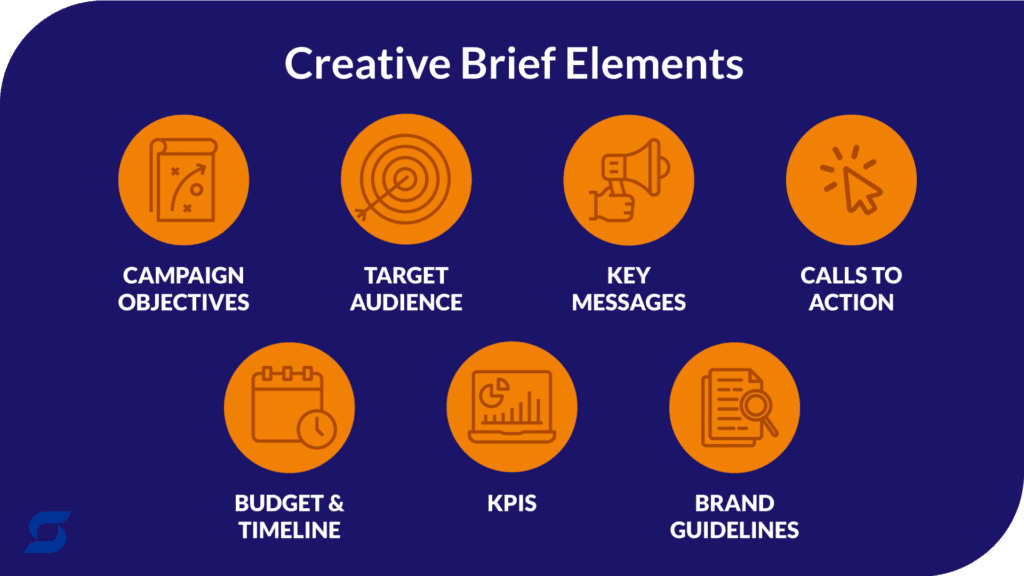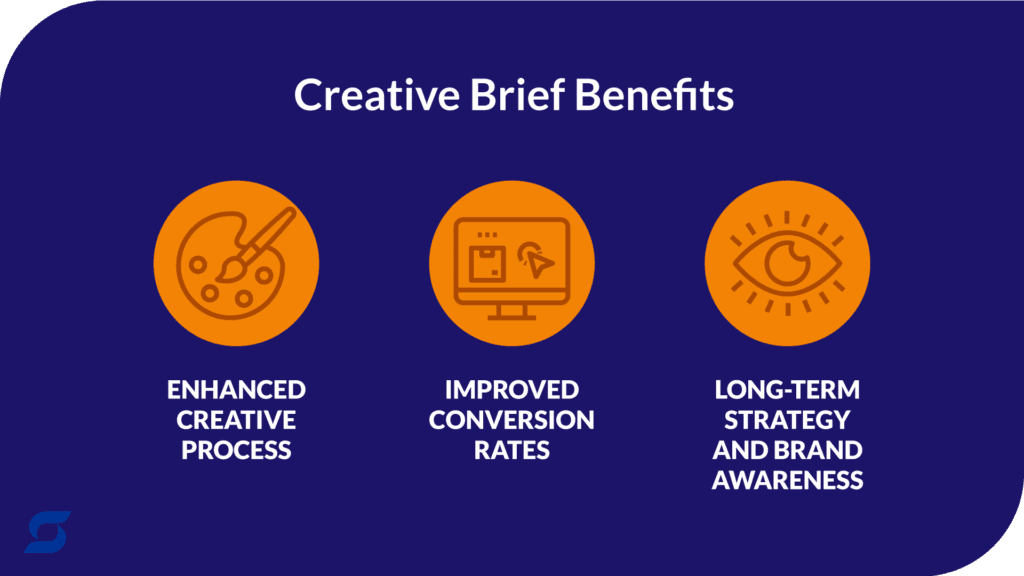A Must-Have for Direct Response Campaigns
As a marketer, you want your next campaign to not only catch your audience’s eye but also compel them to take action. The key behind impactful advertising campaigns isn’t merely creativity, it’s a thorough, thoughtful, specific creative brief.
Effective direct response campaigns are crucial for the success of any brand. However, without a strong creative brief, even the most creative ideas can fall flat. This document is not just a formality, but a strategic tool; your north star to guide your marketing efforts. In this blog post, we’ll discuss why a marketing creative brief is essential, and why you should invest your time into writing one.
What is a Creative Brief in Marketing?
A creative brief is a concise and specific yet comprehensive 1-2 page document. It outlines the objectives, target audience, key messages, and desired outcomes of a campaign.
It serves as a roadmap for your creative and marketing teams alike. And it ensures everyone is on the same page and working towards a common goal. In simple terms, it’s an accountability tool to make sure the teams are focusing on the purpose of the campaign from the onset.
Direct response campaigns, specifically, need quick action from consumers. A creative brief is key to know your audience, their thoughts, and campaign message to target immediate action. At the end of a creative project, you should be able to match each creative asset up to the key points in your brief. If so, then not only was your brief well-executed, but so was your creative.
The Importance of a Creative Brief
Aligning Objectives and Strategy
A creative brief makes sure your campaign goals and creative work are clearly defined and match your marketing strategy. This alignment is crucial for direct response campaigns, where every element needs to drive the audience towards an action.
By laying out the goals, the brief helps your team focus on creating content that resonates with your target audience. That alignment drives measurable results. A brief should target your key audience and key messaging. The more general your brief is, the less you are talking to your intended audience.
Fostering Ideas and Creative Expertise
A well-crafted creative brief provides a structured framework within which creativity can thrive. It sets clear parameters while encouraging innovative thinking, enabling your team to generate effective creative concepts that stand out. This structured creative process ensures that the ideas developed are both original but also aligned with your campaign goals.
It should not state how to produce the creative. That’s on your creative team to implement, but it should give direction of the tone, messaging, and goals.
Identify clear KPIs
We live in a world where data drives decisions. The importance of setting clear Key Performance Indicators (KPIs) cannot be overstated. A creative brief outlines the metrics that the campaign will use to determine its success, providing a benchmark. This approach allows you to track performance, so you can make informed adjustments to optimize results.
For example, let’s take a home services business in Boston. You don’t want to just “generate leads in the greater Boston area.” Instead, you may want to “increase brand awareness of your business, resulting in quality leads, with the goal of becoming the #1 Home Service business in the New England area.” Specificity and clear metrics are important.
Save Time and Resources
Creating a detailed creative brief at the start requires time and resources. However, it will ultimately save time during the project. A good brief is like a roadmap that guides the creative process of a campaign. It ensures everyone on the team understands the audience, message, and desired outcomes from the start.
The clarity a brief provides often reduces the need for revisions, prevents miscommunication, and streamlines the entire workflow. It saves hours down the road that might otherwise be spent on realigning team efforts with the project’s objectives.
By front-loading the planning phase with a detailed creative brief, you enhance the efficiency of the creative cost and process. You also ensure that the final outputs align with the strategic vision. That ultimately saves time and fosters a more productive and focused creative environment.
Direct Response Campaigns: Why a Creative Brief is Essential
Immediate Action and Clear Messaging
Direct response ads should elicit immediate action from the audience. That action could be making a purchase, signing up for a newsletter, or clicking a link.
A creative brief ensures that the messaging is clear, compelling, and directly aligned with the calls to action. This clarity is crucial for driving conversions and achieving the desired response. Do we want a potential customer to “Learn More” for upper funnel targeting? Or do we want them to “Buy Now” for lower-funnel targeting?
Targeted Audience Engagement
Understanding your audience is key to the success of any direct response campaign. A marketing brief helps identify and segment your target audience. When you get more specific, you ensure your messages are tailored to their specific needs and preferences. This targeted approach increases the likelihood of engagement and enhances the overall effectiveness of your campaign.
Honing in on your target audience is of huge importance because you can not talk to everyone at the same time. You need to identify your key customers and lean in to why they’d need your product or service. If you think you’re talking to everyone, the messaging is likely so general that you’re talking to no one.
Consistency Across Channels
In today’s multi-channel marketing environment, maintaining consistency is vital. A creative brief serves as a reference point for all team members. It ensures that the campaign’s message and tone are uniform across different platforms. This consistency helps in building a cohesive brand image and strengthens the campaign’s impact.
What Elements Should Be in a Creative Brief?
To craft an effective creative brief, include these key elements:
Campaign Objectives: Clearly define what you aim to achieve with the campaign. Are you looking to increase brand awareness, drive sales, or generate leads? Say so.
Target Audience: Describe your potential customers. Include demographics, psychographics, and behavioral insights to help the creative team understand who they are communicating with.
Key Messages: Outline the core messages you want to convey. These should align with your campaign objectives and speak to your target audience.
Calls to Action: Specify the desired actions you want your audience to take. This could be clicking a link, signing up for a newsletter, or making a purchase.
Budget and Timeline: Provide details on the budget and timeline, if applicable for the campaign. This ensures the creative process stays on track and within financial limits.
KPIs: Define the Key Performance Indicators that will measure the campaign’s success.
Brand Guidelines: Include any brand standards to adhere to, ensuring consistency with your brand identity. Also, if applicable, include anything that is a no-go.
Who Should Write the Creative Brief?
Typically, a marketing manager or creative project manager takes the lead in writing a creative brief. However, it’s a joint effort that includes inputs from the CMO, creative director, and occasionally the CEO. This collaboration ensures the brief is both comprehensive and aligned with the broader marketing strategy and business objectives.
Approaching this process with a sense of urgency helps streamline the creative workflow. It enables faster transitions from planning to execution, while maintaining a focus on the project’s goals
How to Know if a Creative Brief is Effective:
An effective creative brief should be:
Clear, Concise, and Specific: It should clearly note the campaign objectives, target audience, and key messages. 1-2 pages is a good rule of thumb.
Actionable: The brief should give enough detail and direction to guide the creative team in developing the assets.
Aligned with Strategy: It should align with the overall marketing strategy and business goals. This ensures that all efforts are cohesive and strategic.
Flexible: While it should provide clear direction, the brief should also allow for creative flexibility. This enables your creative team to do what they do best: explore creatively, but within the defined parameters.
Benefits of a Creative Brief
Enhanced Creative Process
A creative brief streamlines the creative process, providing a clear direction and reducing the risk of miscommunication. This ensures that the creative team can produce work that meets the campaign’s objectives efficiently and effectively.
Improved Conversion Rates
With clear goals, targeted messaging, and defined KPIs, a creative brief helps optimize conversion rates. By focusing on what resonates most with potential customers, your direct response advertisements achieve higher engagement and drive more action. Remember: If you think you’re talking to everyone, you’re likely talking to no one. Specific messaging is key.
Long-Term Strategy and Brand Awareness
A creative brief serves immediate campaign needs, and it also contributes to long-term marketing strategy and brand awareness. By documenting successful approaches and learning from each campaign, you build a bank of best practices. Those can be applied to future projects. The best place to start a new brief is from your previous brief, assuming the campaign was effective and the metrics remain similar.
Conclusion
A creative brief is key for any successful marketing campaign. It’s not just paperwork. It’s a strategic tool that ensures your team’s efforts match your business goals.
Dedicating time to create a thorough brief enhances the effectiveness of your marketing. And it ensures your campaigns meet their goals.
This strategic approach leads to more targeted and impactful campaigns, making the most of both resources and outcomes. Investing in a detailed creative brief is crucial for achieving sustained marketing success. Take this important step and create a brief. You will see a significant improvement in the efficiency and impact of your marketing initiatives.
Get in touch to learn more about how Scale Marketing uses insights to drive growth and business results for companies like yours.








